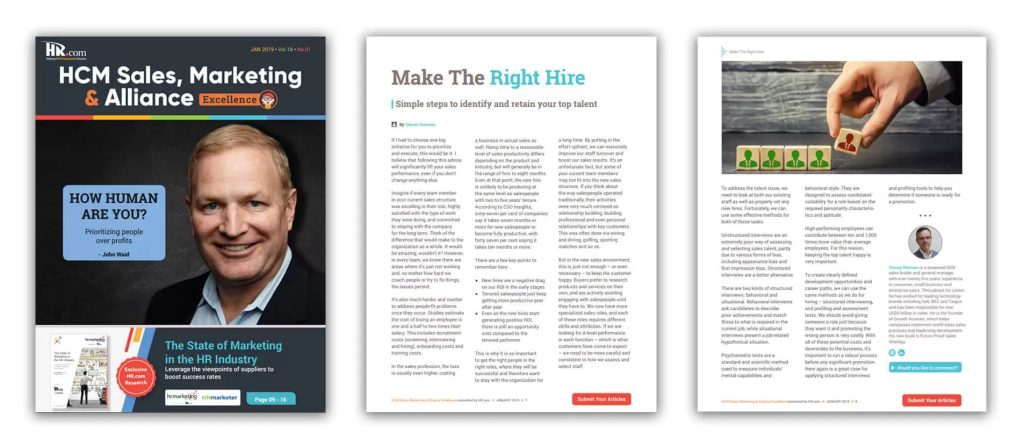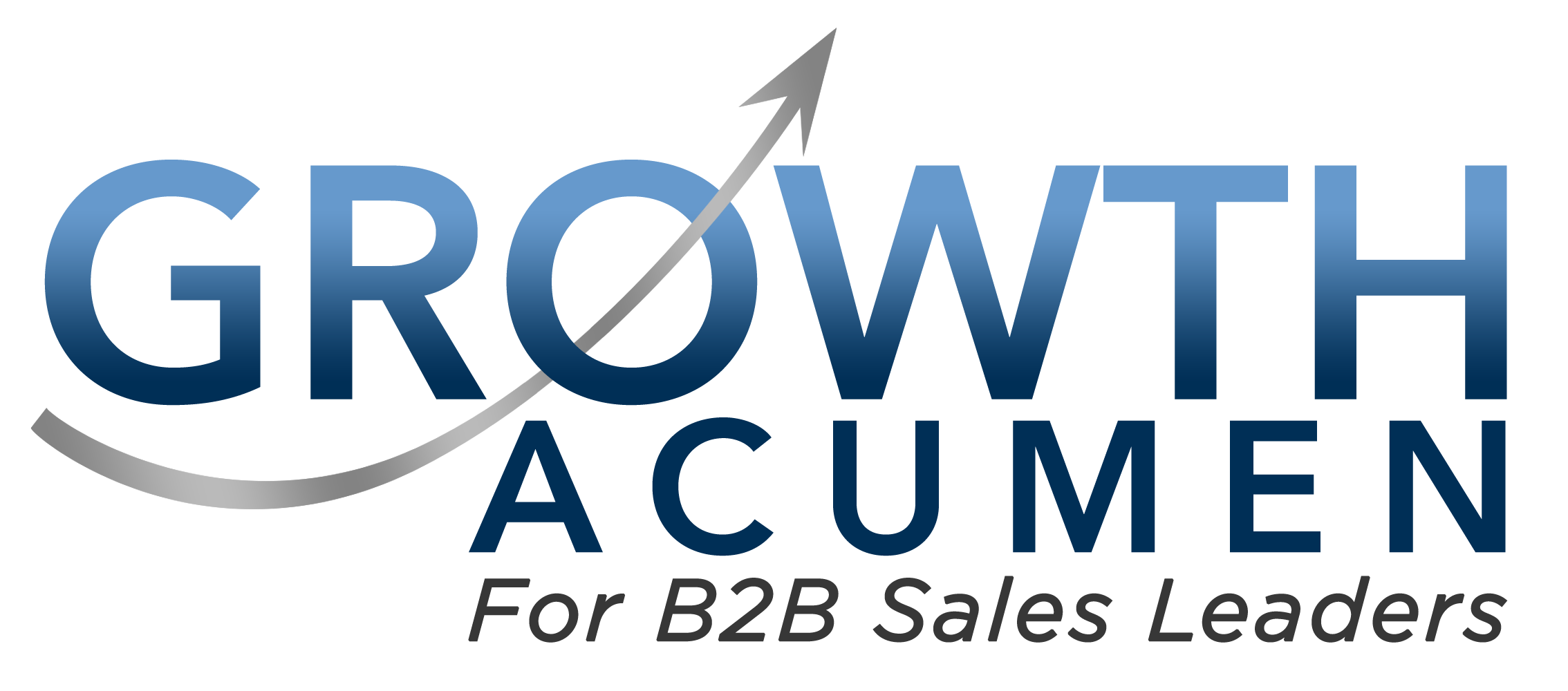
Make the Right Hire
Simple steps to identify and retain your top sales talent.
My article recently published in US ePublications magazine HR.com. The approach to hiring B2B sales staff is incredibly important in today’s competitive market. How do you get the right people in the right roles where they will be successful AND stay with your organisation?

If I had to choose one big initiative for you to prioritize and execute, this would be it. I believe that following this advice will significantly lift your sales performance, even if you don’t change anything else.
Imagine if every team member in your current sales structure was excelling in their role, highly satisfied with the type of work they were doing, and committed to staying with the company for the long term. Think of the difference that would make to the organization as a whole. It would be amazing, wouldn’t it? However, in every team, we know there are areas where it’s just not working and, no matter how hard we coach people or try to fix things, the issues persist.
It’s also much harder and costlier to address people-fit problems once they occur. Studies estimate the cost of losing an employee is one and a half to two times their salary. This includes recruitment costs (screening, interviewing and hiring), onboarding costs and training costs.
In the sales profession, the loss is usually even higher, costing a business in actual sales as well. Ramp time to a reasonable level of sales productivity differs depending on the product and industry, but will generally be in the range of four to eight months. Even at that point, the new hire is unlikely to be producing at the same level as salespeople with two to five years’ tenure. According to CSO Insights, sixty-seven per cent of companies say it takes seven months or more for new salespeople to become fully productive, with forty seven per cent saying it takes ten months or more.

There are a few key points to remember here:
- New hires are a negative drag on our ROI in the early stages
- Tenured salespeople just keep getting more productive year after year
- Even as the new hires start generating positive ROI, there is still an opportunity cost compared to the tenured performer
This is why it is so important to get the right people in the right roles, where they will be successful and therefore want to stay with the organization for a long time. By putting in the effort upfront, we can massively improve our staff turnover and boost our sales results. It’s an unfortunate fact, but some of your current team members may not fit into the new sales structure. If you think about the way salespeople operated traditionally, their activities were very much centered on relationship building; building professional and even personal relationships with key customers. This was often done via wining and dining, golfing, sporting matches and so on.
But in the new sales environment, this is just not enough – or even necessary – to keep the customer happy. Buyers prefer to research products and services on their own, and are actively avoiding engaging with salespeople until they have to. We now have more specialized sales roles, and each of these roles requires different skills and attributes. If we are looking for A-level performance in each function – which is what customers have come to expect – we need to be more careful and consistent in how we assess and select staff.
To address the talent issue, we need to look at both our existing staff as well as properly vet any new hires. Fortunately, we can use some effective methods for both of these tasks:
Unstructured interviews are an extremely poor way of assessing and selecting sales talent, partly due to various forms of bias, including appearance bias and first impression bias. Structured interviews are a better alternative.
There are two kinds of structured interviews: behavioral and situational. Behavioral interviews ask candidates to describe prior achievements and match those to what is required in the current job, while situational interviews present a job-related hypothetical situation.
Psychometric tests are a standard and scientific method used to measure individuals’ mental capabilities and behavioral style. They are designed to assess candidates’ suitability for a role based on the required personality characteristics and aptitude.
High-performing employees can contribute between ten and 1,000 times more value than average employees. For this reason, keeping the top talent happy is very important.
To create clearly defined development opportunities and career paths, we can use the same methods as we do for hiring – structured interviewing, and profiling and assessment tests. We should avoid giving someone a role just because they want it and promoting the wrong person is very costly. With all of these potential costs and downsides to the business, it’s important to run a robust process before any significant promotion. Here again is a great case for applying structured interviews and profiling tools to help you determine if someone is ready for a promotion.



